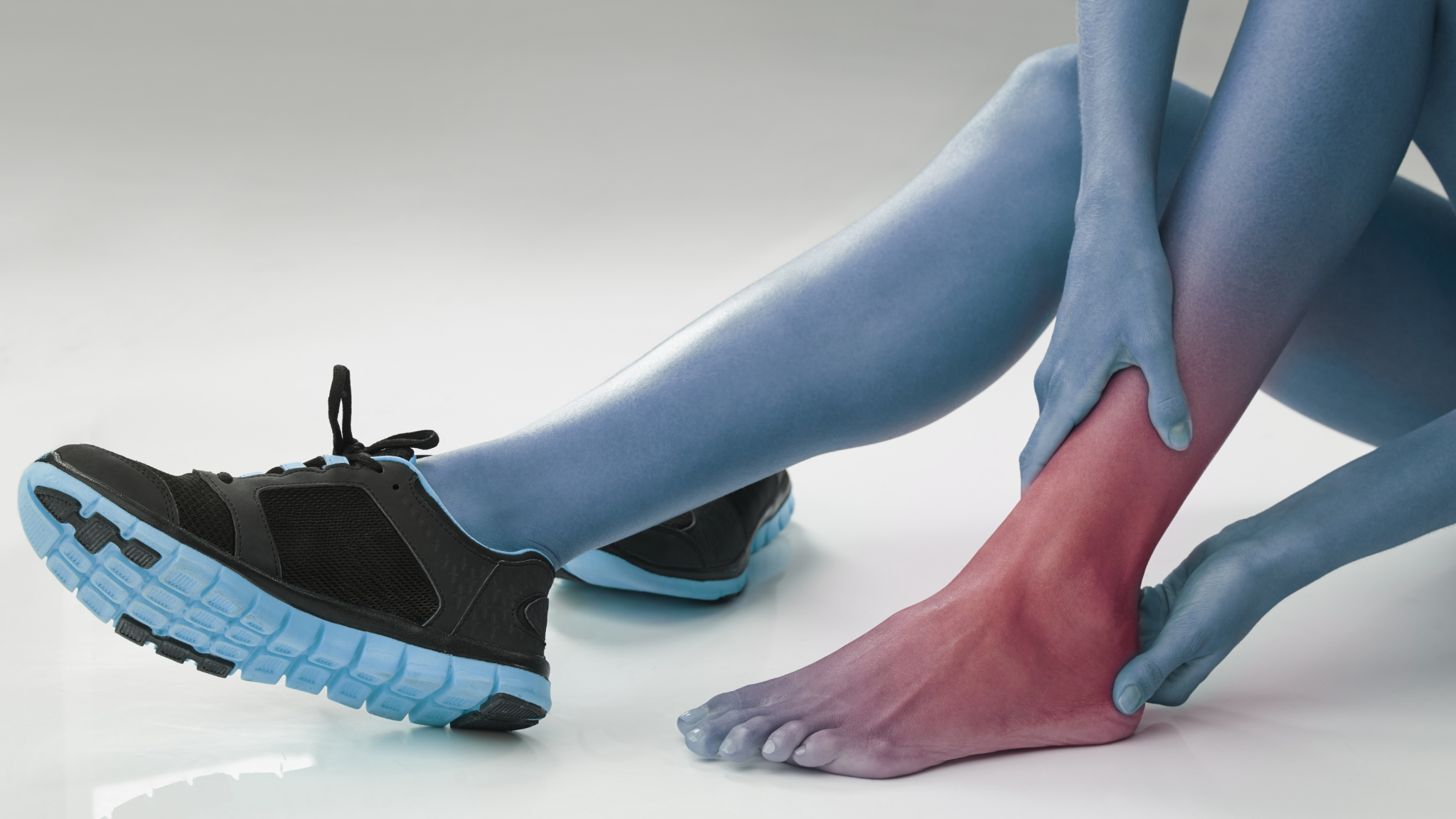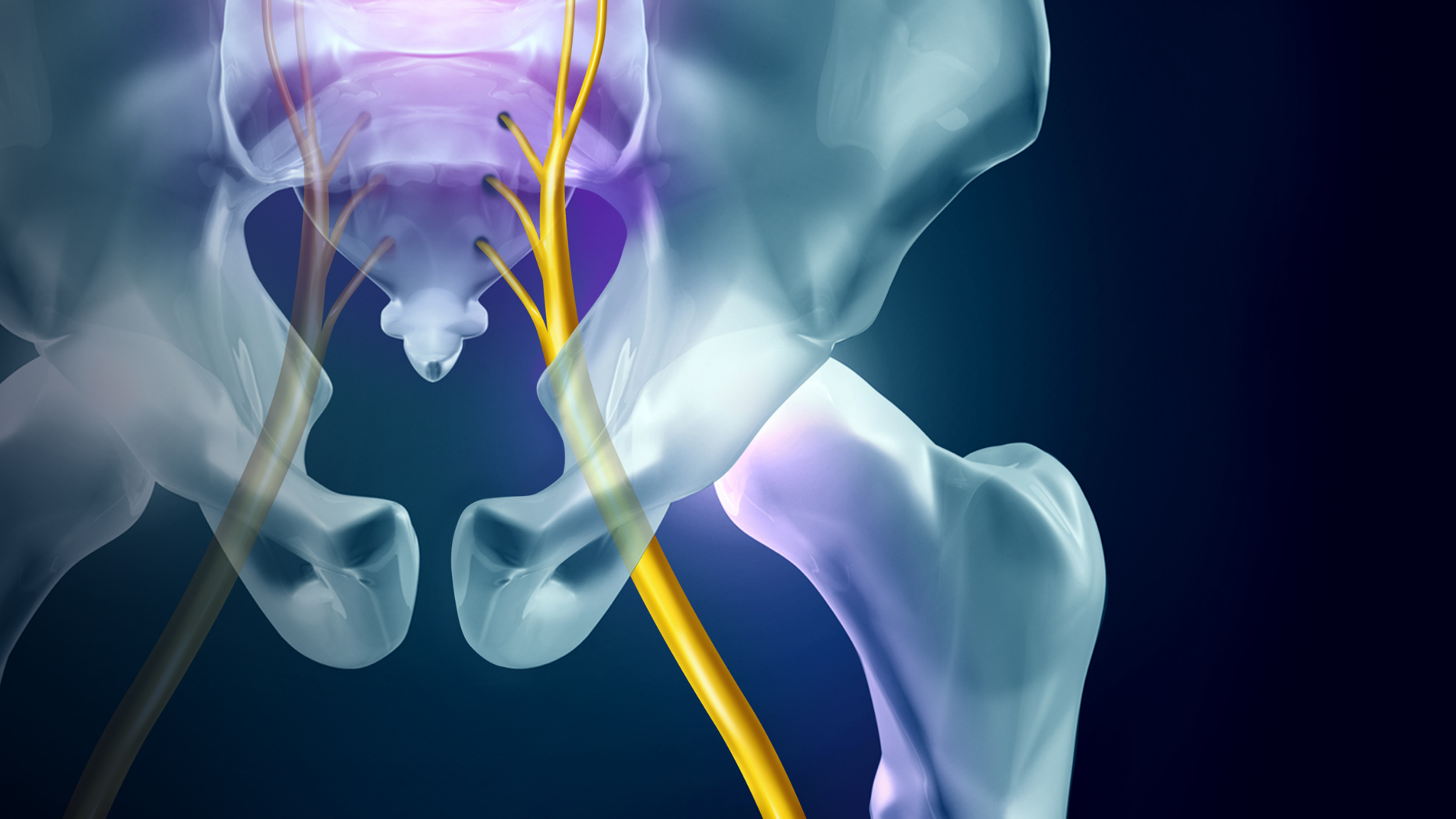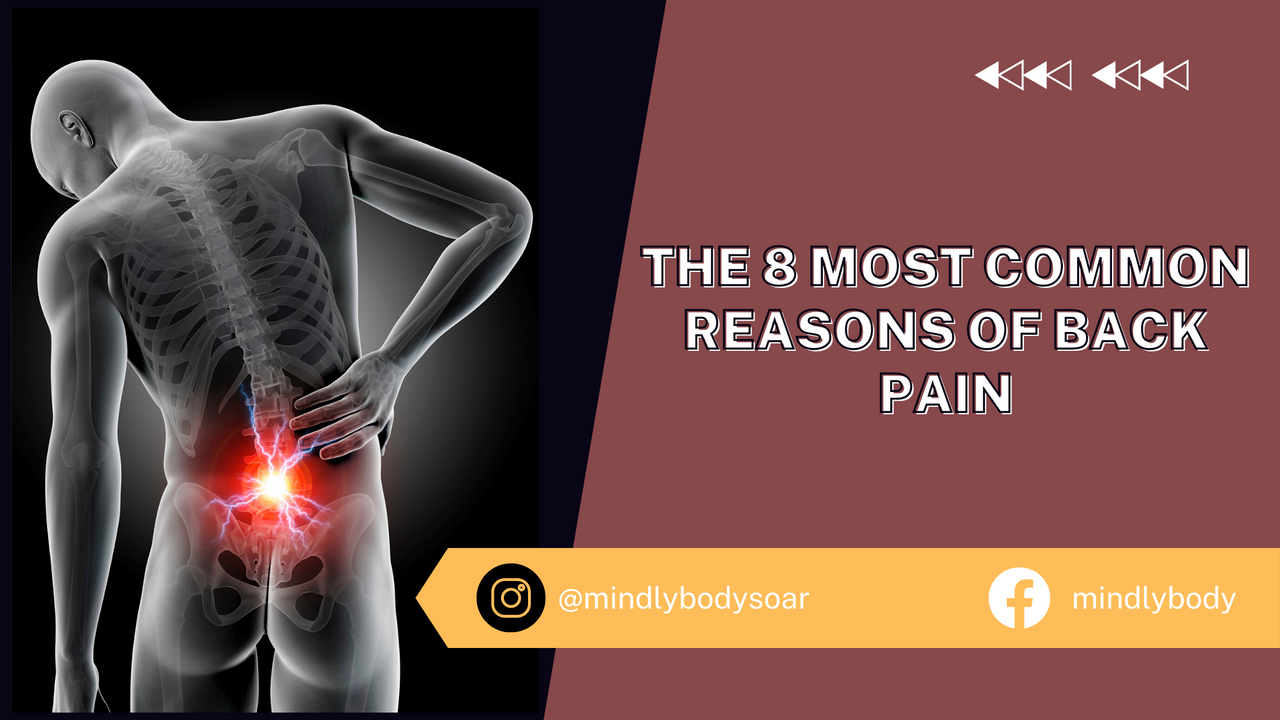Back pain is a common complaint that affects people of all ages and lifestyles. While it can be a sign of a serious underlying medical condition, in most cases, it is caused by simple factors that can be quickly addressed.
In this blog post, we will explore the eight most common reasons for back pain and discuss practical tips on preventing and managing it.
So, let’s get started! Whether you are an athlete, a desk worker, or simply looking for ways to maintain a healthy spine, this post is for you.
1. Inactivity

Physical inactivity refers to a lifestyle where an individual spends a significant amount of time sitting or lying down and engaging in very little physical activity or exercise. This can include activities like watching TV, sitting at a desk or computer for long periods, and not incorporating any movement or exercise in their daily routine.
Prolonged periods of physical inactivity can lead to a range of adverse health outcomes, including musculoskeletal problems like back pain.
These factors may start as mild discomfort but worsen without lifestyle changes.
Treatment:
Improving your physical activity levels and movement quality can be a great start!
First, identify any imbalances or underlying causes of your pain. You can prevent or resolve pain and discomfort by taking these proactive steps:
- Incorporate movement breaks every 25 minutes if you work at a desk
- Consult a professional to improve your lifting technique
- Spend time warming up properly before exercise
- Complete daily body maintenance
Prioritizing prevention is essential, as it is less expensive than treatment in the long run. Remember not to ignore any signs of discomfort and take action to address them as soon as possible.
2. Muscle imbalance, weak muscle (tightness and compensation in movement)

Muscle imbalances, such as strength imbalances, can throw your body out of alignment and put you at greater risk of injury in and out of the weight room.
For example, suppose you have tight ankles on one side. In that case, you may struggle to execute an efficient frontal squat requiring adequate ankle mobility. Similarly, hip imbalances can cause pain during hinging or squatting and contribute to knee valgus and hip shift issues.
Causes:
- Bad posture
- Inactivity
- Lifestyle
- An exercise program that not tailored for you
- Wrong exercise technique
- Ongoing injuries
- Untreated injuries
Symptoms:
- Some muscles are not firing up as they should while training.
- Injury (if you are injured too much too often, you should look into the reason, find your why)
- Difficulty to move, that can be worse after rest
- Reduced mobility and range of movement
- Stiffness
- Dull aches and pain
- Cramps
- Discomfort
Treatment:
Consider incorporating a 10 to 15-minute warm-up and cool-down into your exercise routine.
A good warm-up should include a few minutes of cardio-based work to elevate the heart rate, followed by dynamic stretches, activation, and potentiation. For more details, see RAMP Warm-Up.
Following your workout complete a light cool-down on a cardio machine and static stretches at the end of your training.
Include single leg work, lateral, rotational, and bracing into your exercise routine.
If you work in an office, stretch and move around every hour, take the stairs, and try to incorporate as much exercise and movement as possible. Consider using resistance bands for muscle activation to ensure the correct muscles are firing.
If you have had a knee, hip, or lower back injury, you may be at risk of developing a ‘lazy bum,’ meaning your glutes may not engage as they should.
This can have a significant impact on your daily life. To avoid this, identify any movement patterns contributing to the issue and take action as soon as possible.
3. Wrong exercise technique, overtraining or training with an untreated injury
There can be 2 reasons why you can get injured while training:
1. You already had imbalances and ongoing injuries. That made you compensate in movement. These can cause back pain or other musculoskeletal pain. When untreated can become severe! It is pain from overuse and training with untreated or ongoing injuries.
2. Your lifting technique was/is wrong and made you injured. The pain is not from lifting but lifting with the wrong technique
Whichever you are falling into, never too late for a change. There are endless exercise videos on YouTube, make sure you find the right source to learn from. Also, you have to understand they weren’t tailored to your individual needs and injury history. However, I need to admit there are some awesome professionals out there who give endless knowledge with their videos and content, see: Squatuniversity. He is amazing and so knowledgeable.
What will you feel?
- strong, sharp continuous pain (not DOMs)
- your pain is worse after and/or during training
- Your pain does not get better with rest, ice or time
Solution:
It is a risk we take when we move and exercise or weight lift, that we can get injured. This risk is present with everything in life. Still, exercise and lifting is good for you and you can face more of its benefits when you learn about yourself, the variety of exercises and become better at it. Without patience, caution, practice you won’t learn. Ask the professionals in your gym to show you the set up and exercise technique if you are not sure. I am sure they will also feel appreciated to help and do their job they love. Also, there is no need to be intimidated at the gym. We all begin somewhere, no one was born with plates in their hands.
4. Poor posture
Another simple and overlooked reason: Your posture. By posture, I do not only mean the way you sit but hunching over the phone, walking with the shoulders forward, carrying a bag that loads only one side, and many more postural problems. Now, this picture is a great example. What happens when you continuously look at your phone?
It causes the intervertebral discs to migrate backward, which can lead to a bulging disc.
Also, the shoulders will get tight and you will experience soreness and pain in your neck. You can also get headaches and find it difficult to turn your head in the morning when you wake up.
These posture problems can effect any part of the body. Depending what position your are spending most of your time in. The most important is to observe where is the root of the pain. There are few tests that you can complete to identify them, just read my blog: Deadlifting and lower back pain
Then you are ready to make some adjustments like sitting straight, having a standing desk, practicing a neutral spine position or mobilize more. Which one you need depends on your current state.
5. Sprain and Strain
 Sprain occurs when you overstretch or tear a ligament. The ligament connects bone to bones and surround the joints to prevent excessive movement. There are 3 grades of sprains:
Sprain occurs when you overstretch or tear a ligament. The ligament connects bone to bones and surround the joints to prevent excessive movement. There are 3 grades of sprains:
Grade 1: Stretched with little tear
Grade 2: Larger Incomplete tear
Grade 3: Complete tear, sometimes avulsing a piece of bone
Symptoms:
- Swelling
- You can’t bare your weight on the effected area
- Pain
- Bruising
- Limited range of movement
Treatment:
Depending on the grade of the injury it is advised to see a doctor as can be fracture. If you feel the recovery takes long and you can not put weight on it and your bone is effected make sure you seek medical help to check it out.
In grade 1 case keep your the effected area elevated as much as possible. Ice therapy is also recommended. Do not stress the sprain make sure you rest on it. Once you are able to walk normal, you can slowly return to training. TREAT RICE – Rest, Ice, Compress, Elevate!
Strain is the overstretching or tearing of muscles or tendons. Different to a ligament the tendon connects bone to muscle. Strain symptoms are very similar to sprains.
• muscle spasm
• pain
• swelling
• limited flexibility
• limited range of movement
The treatment is again resting, icing, compression and elevation!
6. Deformity

The most common spinal deformities are:
- scoliosis (see picture) the spine curves to the left of right
- kyphosis/hump upper back curving forward
- lordosis – deformity of the lower back – swayback
They can occur as a result of injury, previous spinal surgeries or aging. They can also be the result of child’s growth or you can born with it. Unfortunately they can lead to pain and mobility problems. What are the symptoms?
- pain
- adjusted movement – difficulty moving and balancing
- depending which you have you may be able to see the deformity
Treatment
You should see a specialist who can perform physical examination. If you have any deformity you might get referred to Physical Therapy. They will also relieve pain and give you treatment that is specific to your diagnosis.
7. Sciatica

The sciatic nerve runs all the way from your lower back to the glutes and the legs. This can be often misdiagnosed as symptoms can be even similar to piriformis syndrome or sacroiliac joint dysfunction. If you have symptoms like difficulty holding bladder or difficulty learning, immediately seek medical help as it can indicate to MS. If the pain last long and becomes severe can also be the sign of lumbar degenerative disc disorder. So I recommend to watch out for the signs and symptoms and do not try to self-diagnose!
Sciatica symptoms:
- weakness and numbness in one leg
- pain in the lower back, bum or legs ( mainly normally occurs in the legs)
- pain is wore when you straighten the leg
- pain with sitting, standing and moving
Treatment:
What my suggestion with sciatica is not to live on painkillers. Most of the time they can treat it with injections and pain killers which in long-term won’t fix the problem. Is like putting plaster on a wound. Do not become or stay inactive, complete physical therapy and train. Stretch and mobilize. They will do good for you. Once you completed the exercises given by your physical therapist you can start implementing your own training, weigh training routine. Make sure you do the exercises correctly and stay consistent. Is a whole lifestyle change. Not easy but better than to be in pain for the rest of your life and live on pain killers.
8. Arthritis

Arthritis is basically the inflammation of the joints. There are two common types :Osteoarthritis, which affects more people and and rheumatoid.
Symptoms:
- swelling on the joints in any part of the body
- pain
- redness
- stiffness
- decreased range of motion (like you can’t bend the fingers)
- discomfort
It can occur as the result of family history, overuse, age..etc. It is bone rubbing to bone when the cartilage wears out, which can be quite painful The ligaments and tendons and muscles have to work harder. Therefore, inactivity can be more harmful to arthritis than being active. This is very important as you can maintain or reach a healthy weight that puts less stress on the joints. This is one of the treatments I could recommend. Other treatment for Osteoarthritis:
- Pain relieving medication
- Anti-inflammatory food – diet makes a huge difference in healing, recovery and lifestyle
- surgery
I always say prevention is cheaper than treatment. But maybe not even that is cheaper but is less painful. Why would you wait until you are in pain? It affects the quality of your life and the things you can do. I also disagree with the endless amount of painkillers we have to take nowadays. I know they ‘kill the pain’,, but they do NOT solve it. Is always better to look at the root of the pain and treat it from there. Lifestyle change is hard, it needs determination, but which would you choose? Health or pain?
I need to admit lots of times we only care when it is already there, but do not wait for that. Do things now that you can to prevent!
The reasons of my blogs are to make the world painless and more active. I stress lots about movement, but we weren’t supposed to sit all day even if it feels more comfortable. MOVE MORE AND MOVE BETTER!
Love,
Alexandra
